
by Sam Juliano
July 4th was once a time of incalculable joy in Fairview!
Baby boomers regularly immersed in the priceless memories that defined their coming of age in the Borough of Fairview will doubtless count July 4th as a premium recall that as much as any time of the year exemplified the town’s community spirit. The fireworks that were staged on the Little League Field either on the evening of July 3rd or during the nocturnal invasion of July 4th proper by fire department personnel brought together athletes, Scouts, grammar and high school students, service organization officers and members, church activists, and even those who for most of the year were cloistered and reluctant to engage in social activities. The July 4th fireworks for many was the crowning event after daytime activities on the field that including pillow and relay races, games and complimentary refreshments such as hot dogs, pretzels and soft drinks.. Winners received trophies and framed acknowledgements from Borough officials or service organization leaders. While fireworks are still engineered in the area, the time is long gone when residents can look forward to July 4th as a day of frantic activity from 10 A.M. till 10 P.M. Like those of us who counted the days till the Yuletide airing of “The Wizard of Oz” on CBS, many Fairview youngsters focused their expectations on our nation’s birthday, from the moment they received their report cards, pondering the competition among their friends, and the cherry on top of the sundae, the raucous, booming pyrotechnic display that lit up Fairview’s sky and dared anyone living on 6th, 7th or 8th streets to turn in early.
The grass spaces around the field of course, were overflowing with locals, a bevy of people armed with lawn chairs, some waving sparklers and a few with a mischievous bent discussing their plans to set off “cherry bombs” on the way home from the event. Everybody knew everybody else in those days, and even the ocean of humanity that permeated every nook and cranny of the tract of land brought into Borough domain by legendary Republican Mayor Louis Battaglia in the 1950’s, didn’t diminish the ability of the locals to say hello or greet almost everyone who crossed their paths, on the way to the refreshment stand, up and down the access hill aside Our Lady of Grace, in and around Pop’s Park, the little kids’ playground overlooking the main theater or the descending path from the basketball courts. Of course the immediate locals -those who hailed from 6th, 7th, Kamena and Walker Streets- faithfully attended, and prevalent families like the Montefortes, Blasos, Foglios, Andreazzas, Rutches, Mesiscas, Ballerinis, Picinics, Booths, Mirandas, Lauras, Andrettas, Sartors, Weises were on hand, seemingly ubiquitous no matter where you walked in this gloriously congested hamlet. But the aforementioned names represent only a microcosm of the population who descended on the grounds, and through year-long face-to-face involvement at a time when social media was non-existent Fairview, by way of community and civil organizations, sports and shopping locally was truly one big family.
At the height of the boomer era -and no small coincidence- the wildly popular film version of the Broadway musical “1776”- released in late 1972, debuting at Radio City Music Hall, and for Fairviewites attuned to “philately” the mid-70s was a time to lay down some coin at the box-sized post office next to the Greek Church on Anderson Avenue for all the celebratory issues commemorating our bicentennial.
Yes, the 4th of July is what you make it, and even today those with an adventurous spirit can re-live some scene–specific joys, but the camaraderie we experienced in the 60s and 70s was a singular phenomenon. Ah, the memories, and so many tears.
“A Taste of Cherry,” “The House is Black,” “A Separation,” “Cairo Station,” “Moolaade,” “Close-Up,” “Black Girl,” “Winter Sleep,” “Touki-Bouki” and “Where is the Friend’s House?” Lead Top 115 in Middle East-African Polling according to Voting Tabulator Extraordinaire Bill Kamberger!
1. A Taste of Cherry (Abbas Kiarostami, 1997; Iran) – 250.5
2. The House Is Black (Forugh Farrokhzad, 1963; Iran) – 215.5
3. A Separation (Asghar Farhadi, 2011; Iran) – 192.5
4. Cairo Station (Youssef Chahine, 1958; Egypt) – 190
5. Moolaadé / Magical Protection (Ousmane Sembene, 2004; Senegal) – 182.5
6. Close-Up (Abbas Kiarostami, 1990; Iran) – 179.5
7. Black Girl / La noire de… (Ousmane Sembene, 1966; Senegal) – 175.5
8. Winter Sleep (Nuri Bilge Ceylan, 2014; Turkey) – 161
9. Touki-Bouki / Journey of the Hyena (Djibril Diop Mambéty, 1973; Senegal) – 141
10. Where Is the Friend’s House? (Abbas Kiarostami, 1987; Iran) – 125.5
11. Once Upon a Time in Anatolia (Nuri Bilge Ceylan, 2011; Turkey) – 124
12. The Color of Paradise (Majid Majidi, 1999; Iran) – 107
13. The Wind Will Carry Us (Abbas Kiarostami, 1999; Iran) – 106
14. A Moment of Innocence (Mohsen Makhmalbaf, 1996; Iran) – 105.5
15. Distant (Nuri Bilge Ceylan, 2002, Turkey) – 104.5
16. Foxtrot (Samuel Maoz, 2017; Israel) – 92.5
17. Capernaum (Nadine Labaki, 2018; Lebanon) – 90
18. Yeelen / Brightness (Souleymane Cissé, 1987; Mali) – 90
19. Z (Costa-Gavras, 1969; Algeria) – 89
20. Footnote (Joseph Cedar, 2011; Israel) – 85
21. The Band’s Visit (Eran Kolirin, 2007; Israel) – 79.5
22. Tilai / The Law (Idrissa Ouedraogo, 1990; Burkina Faso) – 71.5
23. The Circle (Jafar Panahi, 2000; Iran) – 70
24. The Salesman (Asghar Farhadi, 2016; Iran) – 69.5
25. The White Balloon (Jafar Panahi, 1995; Iran) – 67.5
26. The Apple (Samira Makhmalbaf, 1998; Iran) – 64
27. Alexandria…Why? (Youssef Chahine, 1979; Egypt) – 63.5
28. Gett: The Trial of Viviane Amsalem (Ronit & Shlomi Elkabetz, 2014: Israel) – 57
29. About Elly (Asghar Farhadi, 2009; Iran) – 56.5
30. District 9 (Neill Blomkamp, 2009; South Africa) – 49
31. The Willow Tree (Majid Majidi, 2005; Iran) – 47.5
32. And Life Goes On / Life and Nothing More (Abbas Kiarostami, 1992; Iran) – 44
33. Children of Heaven (Majid Majidi, 1997; Iran) – 43
34. The Wild Pear Tree (Nuri Bilge Ceylan, 2018; Turkey) – 42.5
35. Bal / Honey (Semih Kaplanoglu, 2010; Turkey) – 42
36. Late Marriage (Dover Koshashvili, 2001; Israel) – 42
37. Yossi & Jagger (Eytan Fox, 2002; Israel) – 42
38. Xala / Impotence (Ousmane Sembene, 1975; Senegal) – 41.5
39. Through the Olive Trees (Abbas Kiarostami, 1994; Iran) – 41
40. Waltz with Bashir (Ari Folman, 2008; Israel) – 40
41. Yol / The Road (Yilmaz Güney & Şerif Gören, 1982; Turkey) – 39.5
42. The Dupes (Tewfik Saleh, 1972; Syria) – 38
43. The Gods Must Be Crazy (Jamie Uys, 1980; South Africa) – 38
44. I Am Not a Witch (Rungano Nyoni, 2017; Zambia) – 38
45. Timbuktu (Abderrahmane Sissako, 2014; Mauritania) – 37
46. Omar (Hany Abu-Assad & Roudaina Hatoum, 2013; Palestine) – 36.5
47. Tsotsi (Gavin Hood, 2005; South Africa) – 36
48. Bashu, the Little Stranger (Bahram Beyzaie, 1989; Iran) – 35.5
49. The Land (Youssef Chahine, 1969; Egypt) – 34
50. Hit the Road (Panah Panahi, 2021; Iran) – 32.5
51. Offside (Jafar Panahi, 2006; Iran) – 31.5
52. Time to Love (Metin Erksan, 1965; Turkey) – 30.5
53. Paradise Now (Hany Abu-Assad, 2005; Palestine) – 29.5
54. The Attack (Ziad Doueiri, 2012; Lebanon) – 28.5
55. Crimson Gold (Jafar Panahi, 2003; Iran) – 28.5
56. It Must Be Heaven (Elia Suleiman, 2019; Palestine) – 28.5
57. Baran / Rain (Majid Majidi, 2001; Iran) – 27.5
58. Taxi / Taxi Tehran (Jafar Panahi, 2015; Iran) – 27.5
59. The Time That Remains (Elia Suleiman, 2009; Palestine) – 27.5
60. The White Meadows (Mohammad Rasoulof, 2009; Iran) – 27
61. Soleil O / Oh, Sun (Med Hondo, 1967; Mauritania) – 26.5
62. This Is Not a Burial, It’s a Resurrection (Lemohang Jeremiah Mosese, 2019; Lesotho) – 25.5
63. The Day I Became a Woman (Marzieh Makhmalbaf, 2000; Iran) – 25
64. The Cakemaker (Ofir Raul Graizer, 2017; Israel) – 24.5
65. Yaaba / Grandmother (Idrissa Ouedraogo, 1989; Burkina Faso) – 24.5
66. Bamako / The Court (Abderrahmane Sissako, 2006; Mali) – 23.5
67. The Herd (Zeki Okten, 1978; Turkey) – 23.5
68. Black and White in Color (Jean-Jacques Annaud, 1976; Ivory Coast) – 22
69. Chronicle of the Years of Fire (Mohammed Lakhdar-Hamina, 1975; Algeria) – 21.5
70. Faat Kiné (Ousmane Sembene, 2000; Senegal) – 21.5
71. The Blazing Sun / Struggle in the Valley (Youssef Chahine, 1954; Egypt) – 21
72. Fill the Void (Rama Burshtein, 2012; Israel) – 21
73. Hyenas (Djibril Diop Mambéty, 1992; Senegal) – 21
74. Route 181: Fragments of a Journey in Palestine-Israel (Michel Khleifi & Eyal Sivan, 2003; Palestine) – 21
75. Ten (Abbas Kiarostami, 2002; Iran) – 21
76. Teza / Morning Dew (Haile Gerima, 2008; Ethiopia) – 21
77. Turtles Can Fly (Bahman Ghobadi, 2004; Iran) – 21
78. West Beirut (Ziad Doueiri, 1998; Lebanon) – 21
79. 5 Broken Cameras (Ermad Burnat & Guy Davidi, 2011; Palestine) – 20.5
80. Lebanon (Samuel Maoz, 2009; Israel) – 20.5
81. The Brick and the Mirror (Ebrahim Golestan, 1965; Iran) – 20
82. A Girl Walks Home Alone at Night (Ana Lily Amirpour, 2014; Iran) – 20
83. Moffie (Oliver Hermanus, 2019; South Africa) – 20
84. Theeb (Naji Abu Nowar, 2014; Jordan) – 19.5
85. Walk on Water (Eytan Fox, 2004; Israel) – 19.5
86. Destiny (Youssef Chahine, 1997; Egypt) – 19
87. Wanderers in the Desert (Nacer Khemir, 1984; Tunisia) – 19
88. The Peddler (Mohsen Makhmalbaf, 1987; Iran) – 18
89. Silences of the Palace (Moufida Tlatli, 1994; Tunisia) – 17
90. Atlantics (Mati Diop, 2019; Senegal) – 16.5
91. The Curlew’s Cry / The Nightingale’s Prayer (Henry Barakat, 1959; Egypt) – 16.5
92. The Mummy / The Night of Counting the Years (Chadi Abdel Salam, 1969; Egypt) – 16.5
93. Blackboards (Samira Makhmalbaf, 2000; Iran) – 16
94. The Bubble (Eytan Fox, 2006; Israel) – 16
95. Ceddo / Outsiders (Ousmane Sembene, 1977; Senegal) – 16
96. Mandabi / The Money Order (Ousmane Sembene, 1968; Senegal) – 15.5
97. Wadjda (Haifaa Al-Mansour, 2012; Saudi Arabia) – 15.5
98. The Cycle (Dariush Mehrjui, 1977; Iran) – 15
99. Dry Summer (Metin Erksan, 1963; Turkey) – 15
100. 3 Faces (Jafar Panahi, 2018; Iran) – 14
101. Abouna / Our Father (Mahamat Saleh-Haroun, 2002; Chad) – 14
102. The Child of Another (Jean-Pierre Dikongue-Pipa, 1975; Cameroon) – 14
103. The Cow (Dariush Mahrjui, 1969; Iran) – 14
104. Dry Season (Mahamat-Saleh Haroun, 2006; Chad) – 14
105. Gabbeh (Mohsen Makhmalbaf, 1996; Iran) – 14
106. The Gatekeepers (Dror Moreh, 2012; Israel) – 14
107. Mustang (Deniz Gamze Erguven, 2015; Turkey) – 14
108. Osama (Siddiq Barmak, 2003; Afghanistan) – 14
109. Persepolis (Vincent Paronnaud & Marjane Satrapi, 2007; Iran) – 14
110. The Runner (Amir Naderi, 1984; Iran) – 14
111. The Shadow Play (Yavuz Turgul, 1993; Turkey) – 14
112. This Is Not a Film (Mojtaba Mirtahmasb & Jafar Panahi, 2011; Iran) – 14
113. A Time for Drunken Horses (Bahman Ghobadi, 2000; Iran) – 14
114. Yesterday (Darrell Roodt, 2004; South Africa) – 14
115. Yossi (Eytan Fox, 2012; Israel) – 14
Iranians Abbas Kiarostami and Jafar Panahi tie for first in our long-running Middle East/African polling as per Voting Tabulator Bill Kamberger!!!
FILMS DIRECTED BY WOMEN – 15 (second only to Australia / New Zealand!)








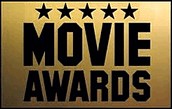
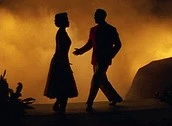
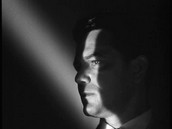

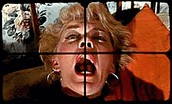

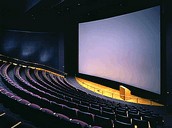

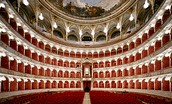






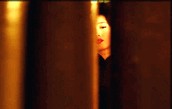
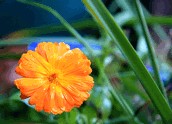
 Click on names for archives
Writers/Founders
Click on names for archives
Writers/Founders
I once thought Faye Dunaway’s makeup (those eyelashes!) was ludicrously wrong for the Depression era. Later I understood that “Bonnie and Clyde” is as much about the 1960s as it is about the 1930s. So now I’m fine with Miss Dunaway’s maquillage.
RIP James Caan, one of the thugs who terrorize Olivia de Havilland in the forgotten “Lady on a Cage”, released in the summer of “A Hard Day’s Night.”
If you liked ’em hirsute, Caan was your guy.
It’s Shelley Duvall’s birthday! Her nickname is the Texas Twiggy and I did not know that.